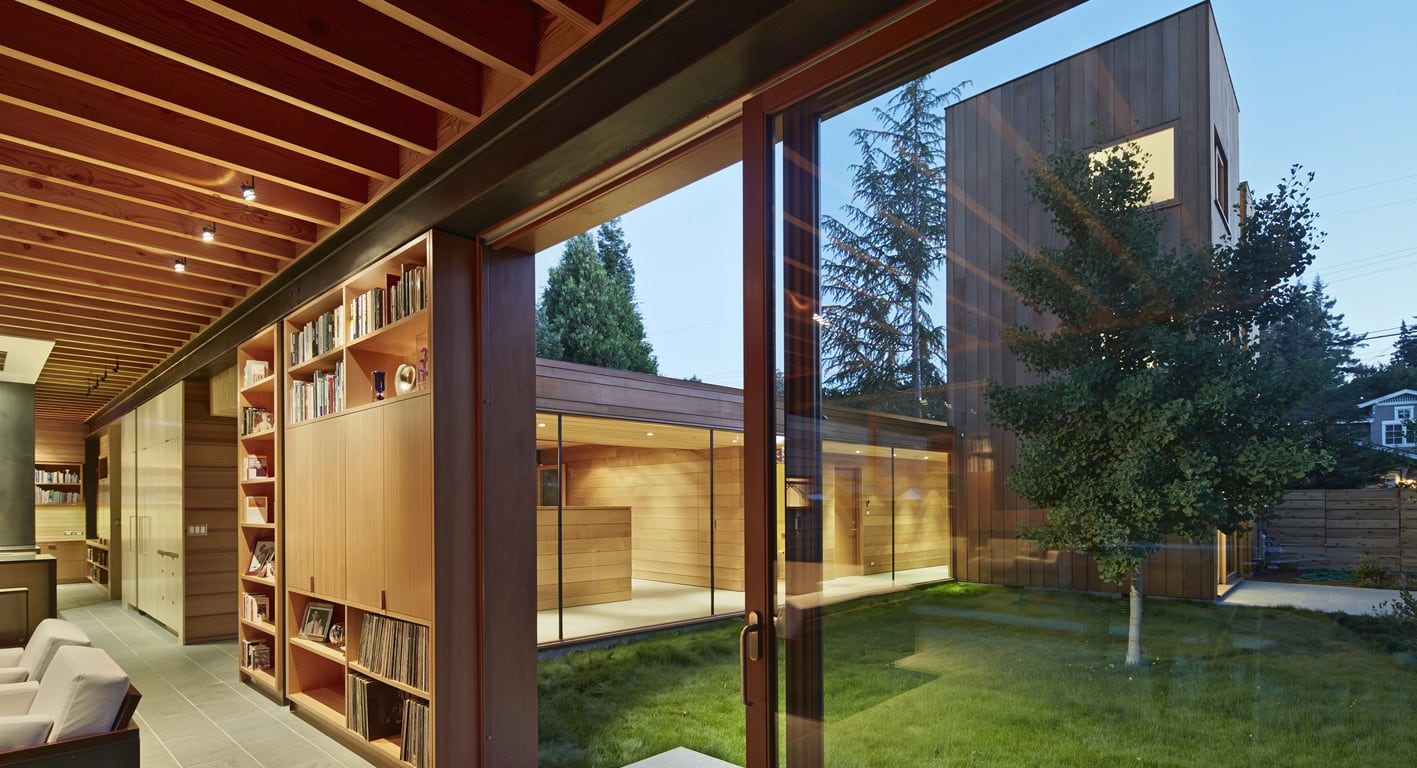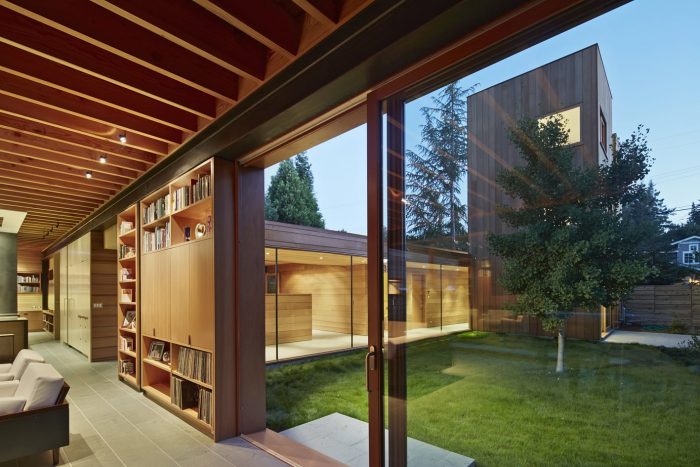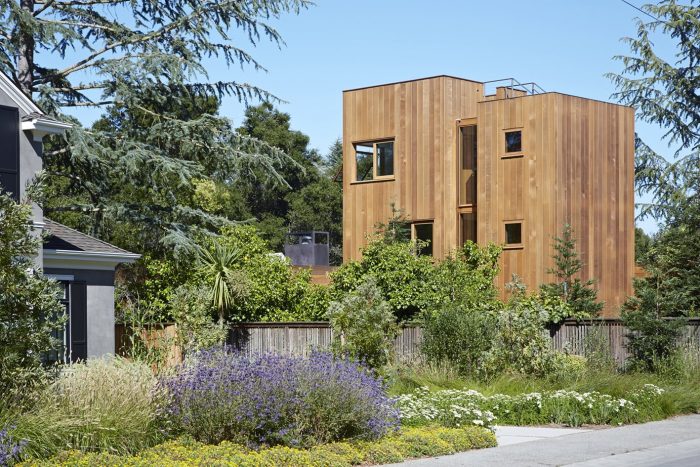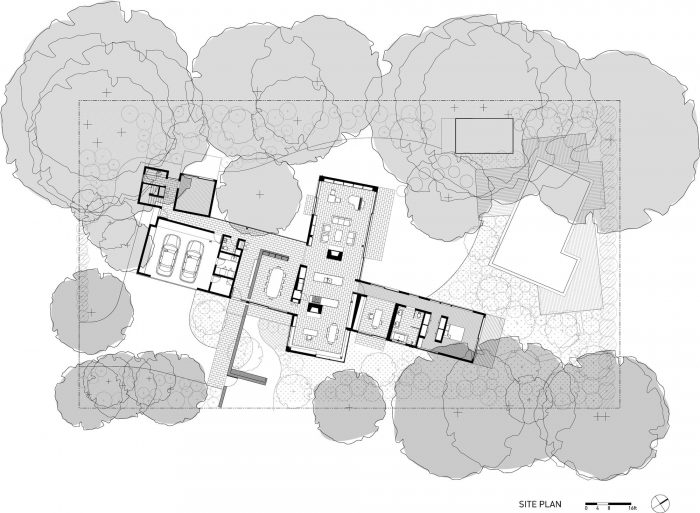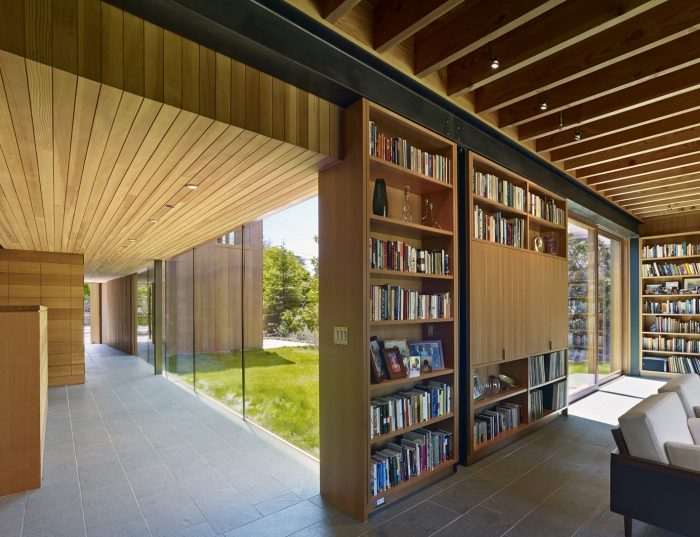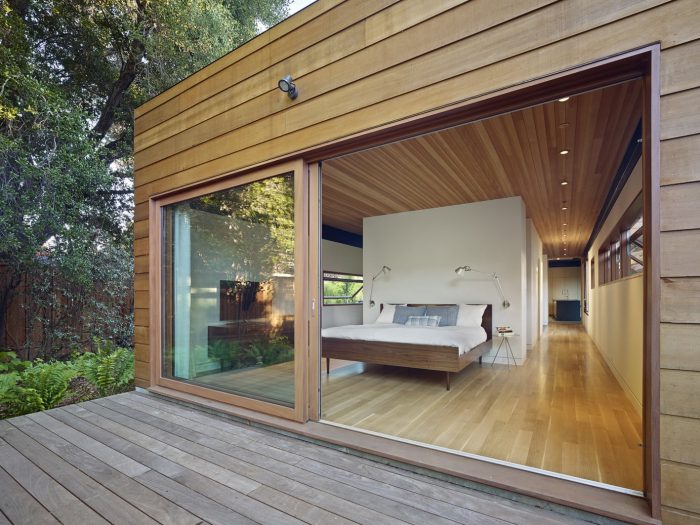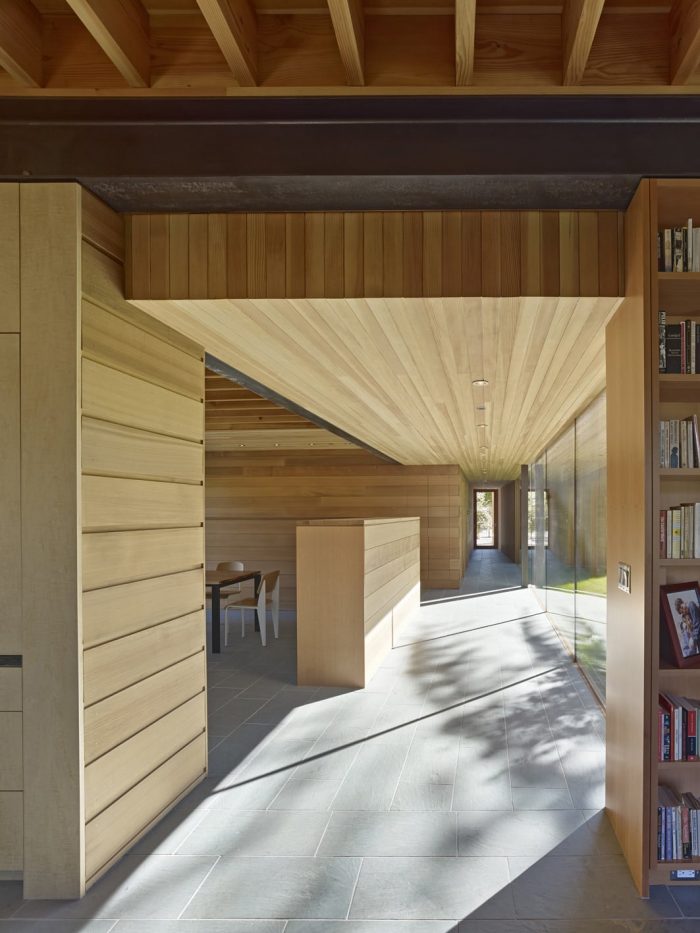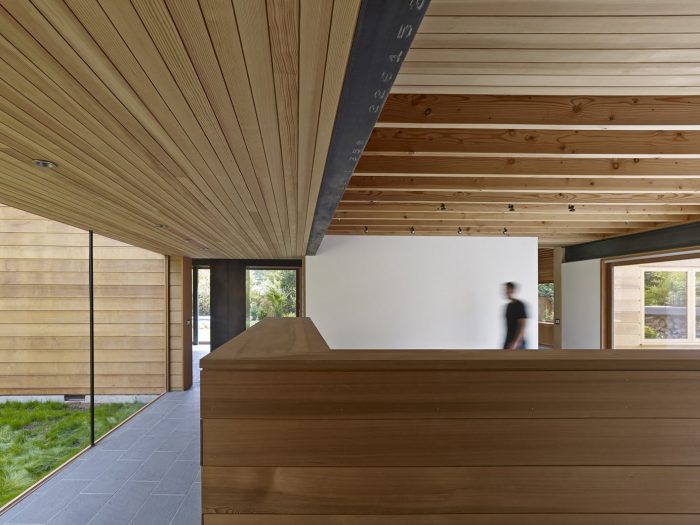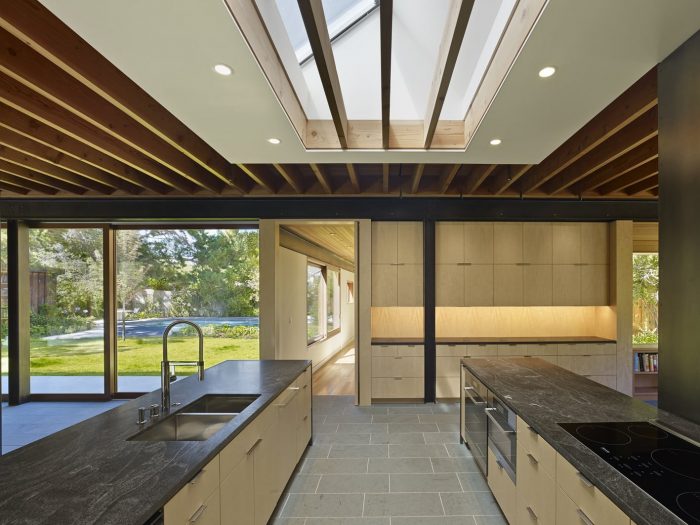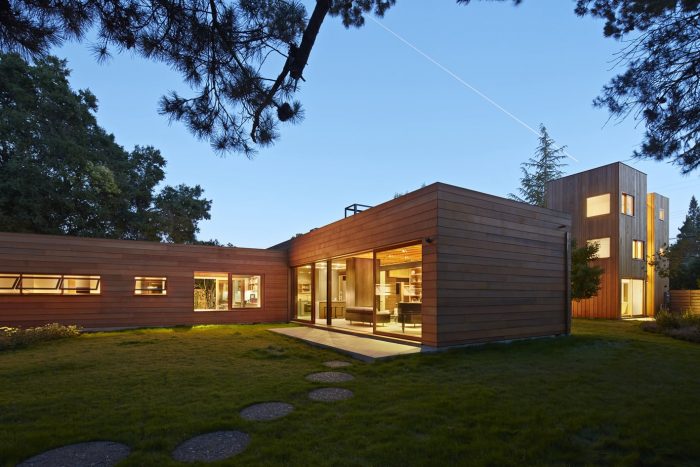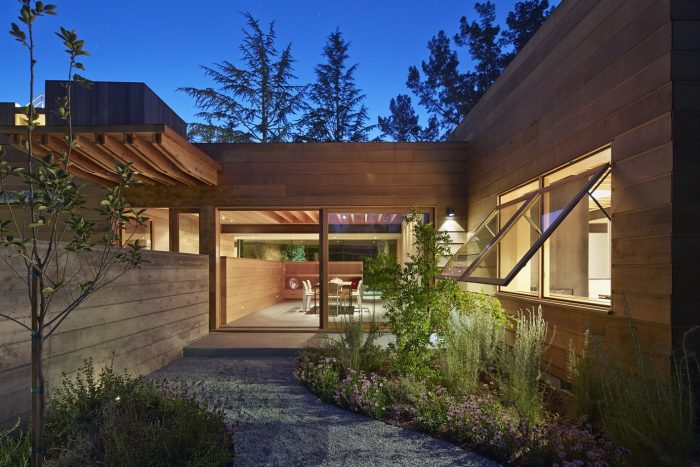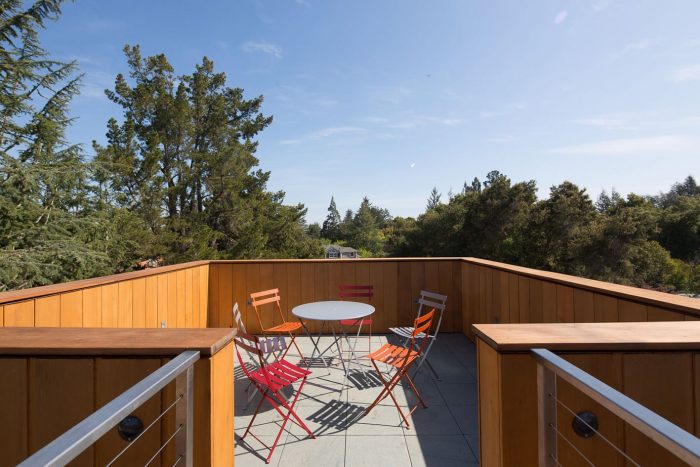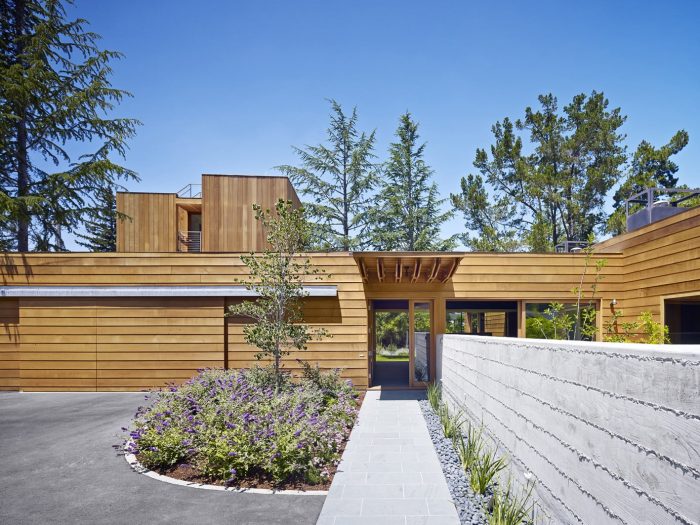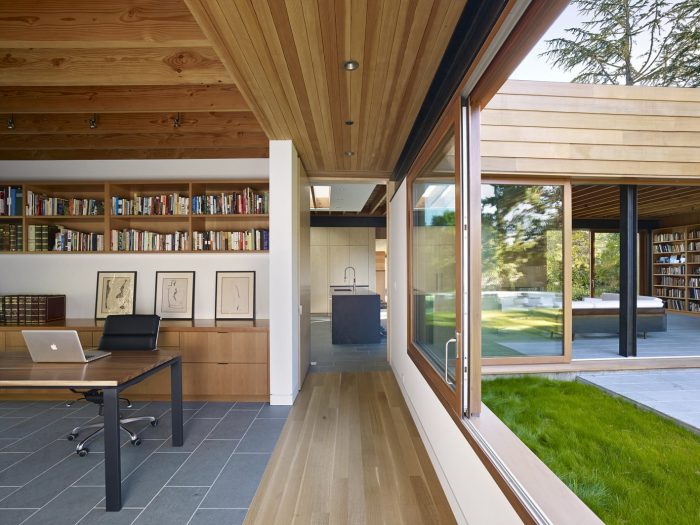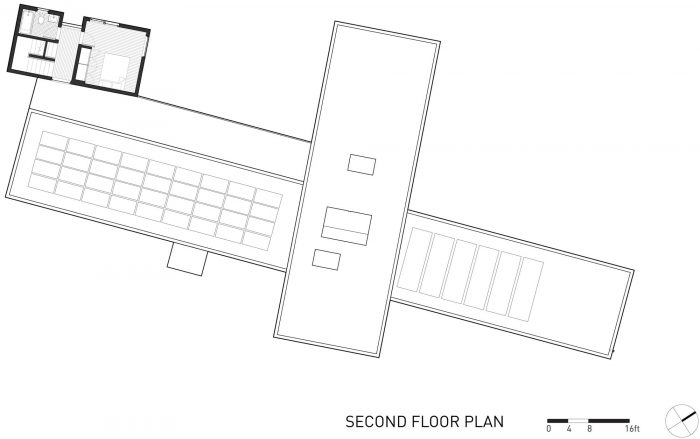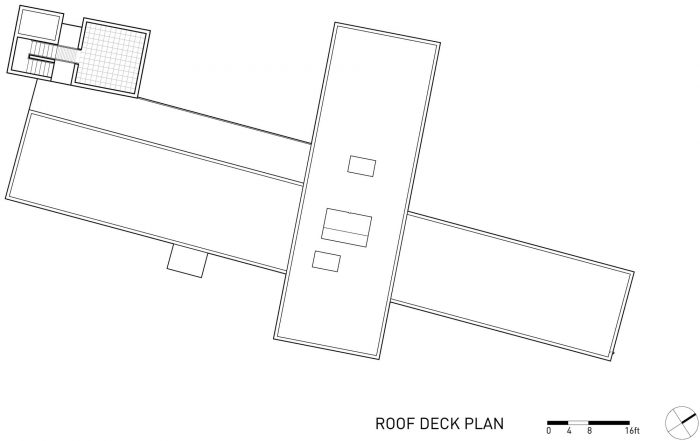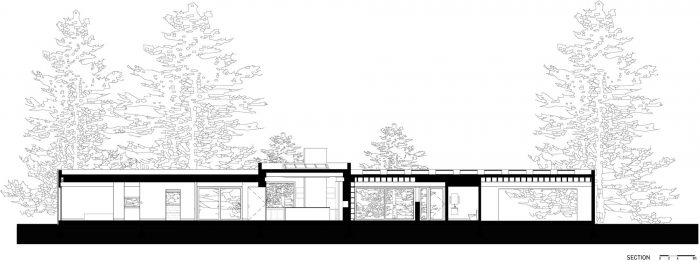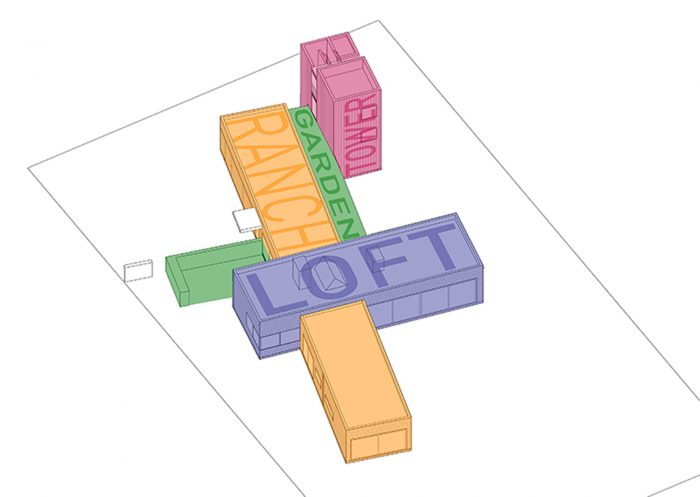这座房子位于硅谷中心地带的半英亩土地上,通过共享和私人项目的互锁条,重新想象了郊区住房类型。该建筑重新采用了加州牧场房屋和农场塔楼的传统形式,作为环境性能和社会互动的工具,用来创造可变的密度、自然通风、太阳能发电、日光照明和沉浸在场地中。
Located on a half acre lot in the heart of Silicon Valley, the house reimagines the suburban housing type through interlocking bars of shared and private program. The composition re-appropriates the traditional forms of the California ranch house and farm tower as tools of environmental performance and social interaction, deployed to create variable density, natural ventilation, solar energy generation, day-lighting, and immersion into the site.
客户是两位有成年子女的教授,他们寻求一个可以容纳不同使用模式的房子,为他们自己创造一个亲密的环境,作为一对夫妇使用,但也允许为10个或更多的家庭成员和几百个派对客人提供一个宽敞的综合配置。这种复杂的方案要求激发了建筑的具体体量和选址。
The clients, two professors with grown children, sought a house that could accommodate varying use patterns, creating an intimate environment for their own use as a couple, yet allowing for a spacious and integrated configuration for ten or more family members, and several hundred party guests. This complex programmatic request inspires the specific massing and siting of the building.
一楼由两个狭长的结构组成,在一个开放的厨房中相交,提供了独特的程序性区域,并在绿树成荫的景观中安顿下来,让院子环绕并渗透到每个房间。几何形状的微妙旋转有助于寻路,以及识别更多的公共和私人功能。私人主人套房通向场地东角的蕨类植物花园,而大型滑动玻璃门将起居室悬挂在景观中,用于家庭聚会或大型活动。
The first floor consists of two long and narrow structures that intersect in an open kitchen, providing distinct programmatic areas and settling into the tree-lined landscape, allowing yards to surround and permeate each room. Subtle rotations of the geometry assist in way-finding, as well as identification of the more public and more private functions. The private master suite opens into a fern garden in the eastern corner of the site, while large sliding glass doors suspend the living room within the landscape for family gatherings or larger events.
一个紧凑而垂直的客人塔位于该地块的西角,位于高大的常青树之间,允许更多的私人客人体验,更紧凑的楼层规划,以及在典型的日常使用中有效地关闭(社会和能源方面)客人空间的能力。在30英尺高的塔顶上,一个屋顶平台穿过树林出现,为下面的结构和周围的城镇景观提供了一个独特的视角。
A compact and vertical guest tower is sited at the western corner of the lot amongst tall evergreens, allowing for a more private guest experience, more compact floor plan, and the ability to effectively shut off (socially and energy-wise) the guest spaces zone by zone during typical daily use. Atop the 30-foot tower, a roof deck emerges through the trees, providing a unique vantage point of the structure below and the surrounding townscape.
这种空间效率也提高了能源效率。客人空间的高密度使得堆叠式建筑系统可以减少资源消耗,而水平空间上方的隐藏式太阳能阵列可以产生房屋90%以上的电力需求。结合隔热玻璃、地板辐射热、被动冷却和有弹性的天然材料,该房屋在资源和生活模式方面都优先考虑了可持续性。
This spatial efficiency also provides increased energy efficiency. The high density of the guest spaces allows for stacked building systems that reduce resource consumption, while a hidden solar array over the horizontal spaces produces over 90% of the electrical demand of the house. Combined with the insulated glazing, radiant floor heat, passive cooling, and resilient natural materials, the house prioritizes sustainability in terms of both resources and living patterns.
通过使用、形式和材料之间的整体关系,低层/高层住宅敏感地回应了场地、自然和邻里关系,创造了一种新型的郊区生活–既是城市也是农村。
Through an integral relationship between use, form, and material, the Low/Rise House responds sensitively to site, nature, and neighborhood, creating a new type of suburban living – both urban and rural.
Architects: SAW // Spiegel Aihara Workshop
Area : 4500 ft²
Photographs :Bruce Damonte
General Contractor : Hunner Associates
Mechanical Engineer : Monterey Energy Group
Geotechnical Engineer : Murray Engineers
Landscape Design : SAW // Spiegel Aihara Workshop, Megumi Aihara
Landscape Contractor : Terra Ferma Landscapes
Civil Engineer : WEC and Associates Inc.
Architect In Charge : Dan Spiegel
Consulting Architect : Peter Rose + Partners, OKB Architecture
Structural Engineer : Larry Cofer
A/V : Active Integration
City : Menlo Park
Country : United States

